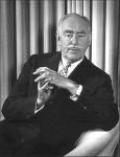Slavery
While some American captives languished, others conducted a flourishing market—and a huge black sailor organized everything
Was there really a conspiracy to burn the town?
Sure that he was divinely appointed, Nat Turner led fellow slaves in a bloody attempt to overthrow their masters
Harriet Beecher Stowe, an extraordinary member of an extraordinary family, always claimed that God wrote Uncle Tom’s Cabin
The black laborers on John Williams’ plantation never seemed to leave or complain. It took some digging to find out why
For some men the only solution to the dilemma of blacks and whites together was for the blacks to go back where they came from
Packed like animals in the holds of slave ships, Negroes bound for America were prey to disease, brutal masters, and their own suicidal melancholy.
Packed like animals in the holds of slave ships, Negroes bound for America were prey to disease, brutal masters, and their own suicidal melancholy.
Without doubt they were Washington, who walked carefully within the Constitution, and Lincoln, who stretched it as far as he dared
A southern woman’s memoir of a by-gone era





